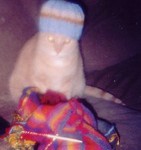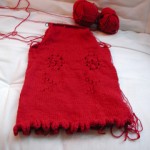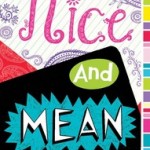The other day on my AuthorsNow! post, I wrote about books that have grabbed me as both a teen and adult. Today, I want to discuss ways we can hook our readers.
I’ll add the disclaimer that it’s not a one size fits all thing.You’ll run across methods that work beautifully in someone else’s book but makes yours look fugly. Or, like that sweater that always made your sibling look hot but looked gross on you until you added pearls, it’s a matter of adopting a method to work with your talents.
When I taught middle school, I told my students to start their stories/essays in one of 3 ways: description, dialogue, or startling fact. I think this advice can apply to novels as well.
Let’s start with description. You’re probably thinking that’s a great way to lose readers, and you’re right if you spend the first three pages writing heavy detail about a brown coffee table or living room. Heck, if you put this kind of detail even halfway through the book, I’ll skim it and move on to a juicier part, but that’s just me. 🙂
One of my favorite books, THE TIME TRAVELER’S WIFE, by Audrey Niffenegger, began with description. I love the poetry of the writing and how, from the start, Niffenegger’s words let us know something monumental is about to happen.
First paragraph:
Clare: The library is cool and smells like carpet cleaner, although all I can see is marble. I sign the visitors’ log Clare Abshire, 11:15 10-26-91 Special Collections. I have never been in the Newberry Library before and now that I’ve gotten past the dark, foreboding entrance, I am excited. I have a sort of Christmas-morning sense of the library as a big box full of beautiful books.
What I love about these lines is that Niffenegger utilizes the senses to draw us in. The details Clare sees and the way she presents them to us, really paint Clare’s character without us knowing anything about her. There is something child-like about her here and endearing, especially when she compares the library to “a big box of beautiful books.”
2. Dialogue–I have heard mixed thoughts on opening a book this way. Some balk at this method because we “hear” words without knowing right away who is saying them or anything about the speaker. But, if the words are alluring, we’re hooked, and then the writer can provide further details to flesh out the missing parts (e.g. setting, etc.).
David Levithan’s WIDE AWAKE begins:
“I can’t believe there’s going to be a gay Jewish president.”
As my mother said this, she looked at my father, who was still staring at the screen. They were shocked, barely comprehending.
Me?
I sat there and beamed.
I love the opening line here, and was pulled in immediately. I didn’t even care who was talking because the line was so surprising. The few lines above are the whole first chapter, but already we get a sense of the narrator. These lines are succinct, and the MC’s optimism/happiness of the moment comes through clearly.
3. Startling Fact–When I taught English and creative writing, this was often my students’ favorite way to open a story. It allowed them to bring out the most crazy, lavish line they could find and present it unapologetically. Sometimes, this is where they would begin and then create a story around the surprising detail. When I’m stuck on a character or chapter, I try to think of the most surprising element of that character and think how it would fit as a chapter opening. At the least, it helps rejuvenate a stalled writing process.
GOING BOVINE by Libba Bray is currently on my to-read list. When I hear a lot about a book, those first pages make me nervous because I really want to like them. I was hesitant to open this but am glad I did. The first page completely pulled me in, and it’s also a perfect example of a startling fact opening.
The best day of my life happened when I was five and almost died at Disney World.
I’m sixteen now, so you can imagine that’s left me with quite a few days of major suckage.
Dying at Disney World is definitely not ideal, but the MC says this was his best day. Really? And it was all downhill from there? Right away, Bray has me, and I can’t wait to read this book.
How about you? What are some of your favorite ways to start stories? Which books did you feel hooked you from the start? How did they do it?






